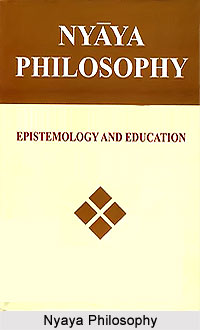 Theory of Category occupies a central position in the Nyaya philosophy. Theory of Category clarifies the general ontological and epistemic status of categorical methods both in philosophy and practice of mathematics. Classical Vaisesika lists six kinds of things namely substance, quality, motion, universal, individuation, inherence. Later Vaisesika adds a seventh category that is absence. The basic stuff of the cosmos in the Vaisesika world-view is atomic. Atoms are un-creatable, indestructible, non-compound substances. Atoms can blend into composite substances and can move. Indeed, the only changes in this cosmos are changes in the arrangement, properties and positions of the atoms. Creation is a matter of coalescing, destruction of breaking. These substances are individuated by the type and organisation of their parts. `Quality` in classical Vaisesika is defined as a particular property. Like for instance, a particular shade of blue colour or a distinct flavour. A `motion` is another sort of particular; it too inheres in a substance and in nothing but a substance. Universals inhere in substances, qualities and motions. A universal inheres simultaneously in more than one, but has nothing inhering in it.
Theory of Category occupies a central position in the Nyaya philosophy. Theory of Category clarifies the general ontological and epistemic status of categorical methods both in philosophy and practice of mathematics. Classical Vaisesika lists six kinds of things namely substance, quality, motion, universal, individuation, inherence. Later Vaisesika adds a seventh category that is absence. The basic stuff of the cosmos in the Vaisesika world-view is atomic. Atoms are un-creatable, indestructible, non-compound substances. Atoms can blend into composite substances and can move. Indeed, the only changes in this cosmos are changes in the arrangement, properties and positions of the atoms. Creation is a matter of coalescing, destruction of breaking. These substances are individuated by the type and organisation of their parts. `Quality` in classical Vaisesika is defined as a particular property. Like for instance, a particular shade of blue colour or a distinct flavour. A `motion` is another sort of particular; it too inheres in a substance and in nothing but a substance. Universals inhere in substances, qualities and motions. A universal inheres simultaneously in more than one, but has nothing inhering in it.
The definitions of the Theory of Categories generate constraints on permissible graphs. They are apparently described in these six categories and these are - a universal not reside in fewer than two things; no two universals reside in exactly the same things; that no two universals are `crosscutting`, partially overlapping one another; no universal lead to an infinite regress; no universal undermine the very nature of the entity in which it resides; and lastly, no universal be incapable of being related to the things in which it purports to reside. Any path must have a beginning and an end. The implicit structure of the Vaisesika ontology is that of a directed graph. So the substances, qualities, motions, universals and individual are represented as the nodes of a graph that set of edges represent the inherence relation. Thus, it can be said that theory of category is both a motivating object of philosophical study as well as a potentially influential formal tool of philosophical examinations of concepts including truth, space and system.



















